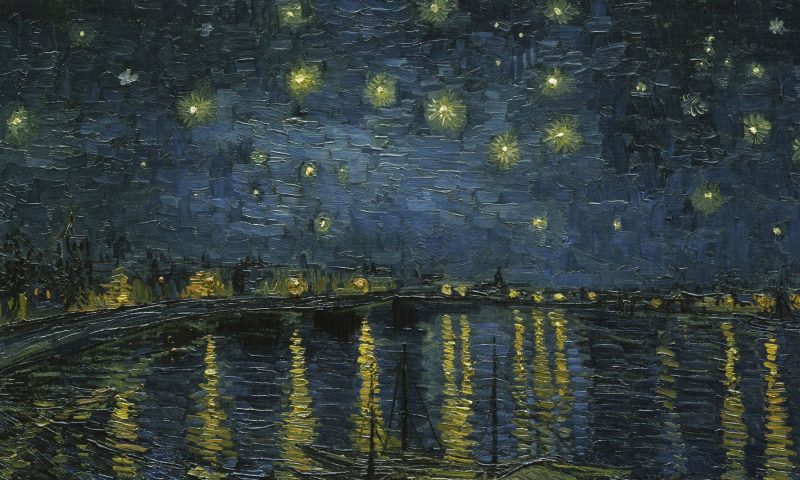This website uses cookies so that we can provide you with the best user experience possible. Cookie information is stored in your browser and performs functions such as recognising you when you return to our website and helping our team to understand which sections of the website you find most interesting and useful.
4 Artists Who Shook The Art World
Learn about the boundary-pushing artists Marina Abramović, Yayoi Kusama, Maurizio Cattelan, and Nam June Paik.
In the art world, creative minds are always looking to challenge the status quo and move their art forward in new and exciting directions. It’s not easy getting your art recognised in a world full of critics, traditionalists, and purists. Artists Marina Abramović, Yayoi Kusama, Maurizio Cattelan and Nam June Paik each had to overcome significant barriers to prove that their new style of art deserved a place in the legitimate art scene. Let’s take a closer look at these fascinating artists whose impact on the artistic community has resonated far beyond their individual masterpieces.
Marina Abramović: The Queen of Performance Art
This fascinating documentary Marina Abramović The Artist is Present looks at the work leading up to her famous MOMA exhibition.
Serbian conceptual artist Marina Abramović, often referred to as the ‘‘grandmother of performance art’’, used her body to redefine the boundaries of artistic expression. She faced the daunting challenge of convincing a skeptical art world that her bold, and often physically demanding work belonged in prestigious galleries. In her daring works, she not only pushes her own body and mind to the very limits, she invites the audience to do the same.
In her 1974 performance piece Rhythm 0, Abramović stood still for six hours surrounded by 72 objects ranging from honey to a loaded gun, and invited visitors to do whatever they wanted to her – she still has scars to this day. In 1997, she won the Golden Lion Prize for her political installment, Balkan Baroque, validating that her art is Art. Her seminal work, The Artist is Present, made her a household name in the world of art. Showcased at New York’s Museum of Modern Art in 2010, Abramović sat motionless for 8 hours and invited participants to share a silent moment with the artist, the exhibition attracted over 850,000 people. Abramović’s success in achieving recognition and legitimacy for performance art created a bold new world for future artists to play in and solidified her as a transformative force in contemporary art.
Yayoi Kusama: Polka Dots and Persistence
The documentary Kusama: Infinity explores the life of Yayoi Kusama from her childhood in Japan to her famous Infinity exhibitions.
You may know her for her iconic polka dots and collaboration with luxury brands like Louis Vuitton, but avant-garde Japanese artist Yayoi Kusama wasn’t always the pop icon we celebrate today. Her career was marked by a fierce determination to be recognized in a male-dominated, and exclusionary art scene. Her drive to create art was fueled by a need to cope with mental health issues she faced throughout her life and a deeply rooted belief that she was destined to be a famous artist. In Japan, Kusama’s work was dismissed as being unimportant but Kusama forged ahead with her vision despite having all the odds stacked against her.
At an early age, she became fascinated with the simple polka dot. To Kusama, they not only soothed her mind but fueled her fascination with the infinite and the interconnectedness of all things. From paintings to performance art, Kusama has continuously explored diverse artistic mediums throughout her career. Her 1979 series of paintings, Infinity Nets, stunned audiences and critics alike with their mesmerizing simplicity and color. In her 1966 Walking Piece, she explored performance art by wandering the streets of New York City in a traditional kimono carrying an umbrella covered in fake flowers. The work she has become most known for in the last decade is her glimmering mirror installation, Infinity Rooms.
Kusama’s perseverance and commitment to her artistic language slowly broke down the barriers that had held her work back from recognition. Today, Kusama is widely considered the world’s favorite artist, her Instagram-famous Infinity Rooms and vibrant polka dots are celebrated in prestigious galleries and pop art installations that draw in countless fans.
Maurizio Cattelan: Provocative Humor
Always an enigma, this documentary attempts to unveil the mysteries behind the artist Maurizio Cattelan.
Italian visual artist and prankster Maurizio Cattelan is known for his provocative and often controversial hyper-realistic sculptures and installations. His satirical works challenged viewers’ preconceived ideas about what constitutes art, leading to heated debates and outright rejection from art world traditionalists.
His very first solo exhibition in 1989, Torno Subito ( Be Right Back) set the tone for his bold artistic style. Audiences arrived at the gallery only to find the door padlocked and a signpost simply saying ‘‘Be right back’’. In 1999, his sculpture, La Nona Ora (The Ninth Hour) which depicted Pope John Paul II struck down by a meteorite, ignited a firestorm of controversy, with some critics claiming he had gone too far and others marking him a genius. In the years that followed Cattelan continued to push the limits of what audiences could accept as art with sculptures like his 2016 golden toilet titled America, to his famous duct-taped banana, Comedian, which sold at auction for $120,000. Despite the backlash, Cattelan’s commitment to challenging societal norms through art earned him a place among the most influential pop artists of his generation.
Nam June Paik: A Technological Rebellion
Narrated by Academy Award Nominee Steven Yeun, this documentary looks at the life and work of Nam June Paik through the artist’s writings.
Korean-born Nam June Paik revolutionized the art world by introducing video technology as a legitimate medium for artistic expression. His innovative use of television sets and video imagery challenged the conventional boundaries of art, making his path as an artist difficult. Now considered the ‘‘Father of Video Art,’’ when Paik first started his work in the 1960s, the idea of using television sets and electronic media as an art form was almost unthinkable. But, Paik was determined, he knew that this new medium was something special.
After seeing composer John Cage in 1958, Paik’s eyes were opened to the world of the avant-garde and the Fluxus movement – an international network of artists who shared a passion for experimentation. Paik eventually became a key figure in the movement. He saw electronic art as the future and his pioneering works, such as TV Buddha and Electronic Superhighway, paved the way for future generations of artists to embrace technology as a canvas for their creativity. Like Kusama and Abromovic, Paik also experimented with performance art, collaborating with avant-garde cellist Charlotte Moorman to create provocative live performances like TV bra for living sculpture. Today, thanks to Paik’s efforts, video art is a common and integral part of the contemporary art landscape.
All four artists, Marina Abramović, Yayoi Kusama, Maurizio Cattelan, and Nam June Paik shared a deeply rooted belief that their unconventional and challenging works belonged in the art world. Through persistence and commitment to their artistic visions, they not only overcame their skeptics but triumphed over tradition, and claimed their rightful place in the world of art.
You can learn more about these artists in the documentaries Marina Abramović: The Artist is Present, Kusama: Infinity, Maurizio Cattelan: Be Back Soon, Nam June-Paik: Moon is The Oldest TV, streaming now on Marquee TV. Please note these documentaries are only available to stream in Great Britain.





